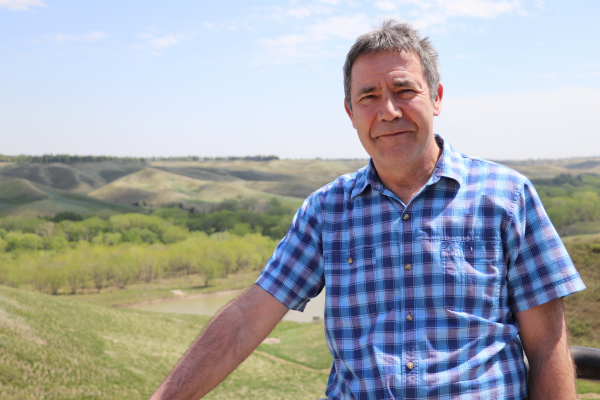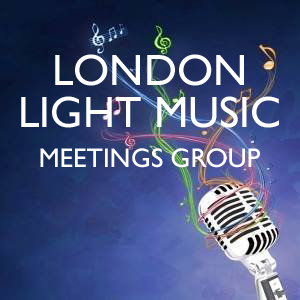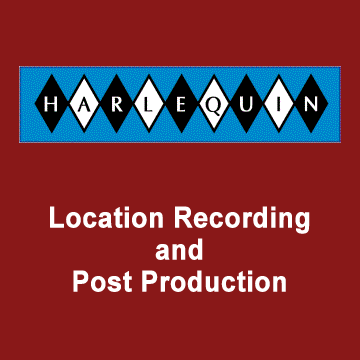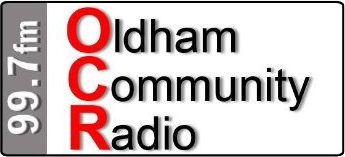I am a research professor of astrophysics at the University of Lethbridge, where I work with colleagues in the European, Japanese and American space agencies (ESA, JAXA, NASA) to design, build and test instrumentation that is flown in space to explore the farthest reaches of our universe. Two of these instruments were flown on ESA’s Infrared Space Observatory and Herschel Space Observatory. The flight spare of one of these instruments can be seen in the Science Museum in London. We are currently working on the successor to Herschel, a project called SPICA.

Bailiff Bridge c1960. He would never have imagined that one day he would leave the village
to be working overseas with space and the universe.
This journey of discovery started at; 4, Royds Avenue, Bailiff Bridge, in November 1952. Just over two years later I was joined by my brother Stuart. Like many of our neighbours (Dyson, Roebuck, Moody, Hudson) our father Leonard worked at “the mill” (T.F.Firth’s); he was a weaver on the 16-quarter Wilton loom. Our mother, Alison, was a stay at home mum for the early years of our lives. Dad was a shop steward and respected by both union and management employees for his frank, yet always fair assessment of issues.
Dad also grew up in Bailiff and like many of his school mates fought in the war, choosing to join the Royal Marines (even though he couldn’t swim). He was on HMS Glasgow, one of the two ships that rescued Norway’s gold from a fjord near Molde before Hitler could get his hands on it. Dad was also a tank commander; his was the first tank from his landing assault craft to drive onto Gold Beach on D Day. One of our prized possessions is Dad’s map of the Normandy beaches, marked top secret - not to be carried in any aircraft. He carried this map into battle, it is stained with blood, perhaps his own.
Mum, who grew up in Leith, near Edinburgh, and was fiercely proud of her Scottish heritage, also contributed to the war effort. She worked in the signals’ division of the WAF in Box (near Corsham) sending coded messages to allies, spies and the French resistance. Mum and Dad met during the war, married afterwards, and established their home at 4, Royds Avenue.
In the aftermath of the war, it would be fair to say that peace was a commodity that was appreciated by residents of Bailiff at a level that as children we never fully understood. As a small village, with a tight-knit community, everyone knew or was related to someone who had paid the ultimate sacrifice. The late Kathleen Collins, the wife of Jack, Dad’s closest friend in Bailiff, was one of the principal guardians of the cenotaph in the village to make sure we didn’t forget.
Stuart and I attended Bailiff Bridge School. My teachers were Ms Ashton, Holdsworth, Crowther, Cawkwell and Rushton. I always find it strange how I can remember the names of all my junior schoolteachers, some of my grammar schoolteachers and few of my professors! Bailiff was our universe: the fields, the beck, the dam, the playground. When we got bicycles our universe expanded, but then we were required to put them in the shed at the bottomof the garden before supper, at the time something we saw as flagrant child abuse!
Having passed the 11+ exam I was fortunate to attend Hipperholme Grammar School; Stuart followed in due course. There is without question no doubt about of the impact of two teachers at Hipperholme on my career, though I did not know this at the time. Harry Ryder (Physics), sadly no longer with us, and Barry Oldham (Maths) a newly minted teacher whose whereabouts I do not know.
As a new graduate Barry (though I would never have called him that) was able to teach us what he had just learned, namely how to best teach maths. Harry (and one would most certainly never have called him that!) instilled in me a love for physics. In fact, he more than over-prepared me for university
Somewhere during my youth, it was apparently thought that I had a good singing voice and so I went from the choir at St Aidan’s to St Matthew’s Church in Lightcliffe. Subsequently, under the mentorship of Phillip Tordoff at Hipperholme I became a founding member of a small choir “the special six” that performed concerts throughout the region. Mr Tordoff excelled in his field. 
School House c1961
The cross-country runs, at sub-zero temperatures across the playing fields, in a wafer-thin t-shirt notwithstanding, I owe much to the calibre of the education I received at Hipperholme. Whenever I return to visit my brother, we usually find an excuse to drive by our alma mater.
From Hipperholme I won entrance to Sussex University in Brighton, a brand new university with a faculty whose average age was in the low 30s. It was a dynamic place with an energetic faculty which built on the strong foundation I had received from Hipperholme.
Envious of my friends who, upon graduation, had well-developed plans to travel the world, I applied for a Commonwealth Scholarship to undertake my PhD in a Commonwealth country. The competition was fierce, but I was fortunate to make the shortlist and was invited to London, for an interview with the Commonwealth Scholarship Committee (CSC). I can distinctly remember at the end of the interview as I headed back to Waterloo to catch the train to Brighton thinking at least I had a day out in London. A month or so later I received a large padded envelope, marked urgent, sent first class. It bore the news that I had been awarded a Commonwealth Scholarship to study in Canada and that I had to notify the CSC within 24 hours of my decision. Failing to reach my parents, I called Stuart who, in his Yorkshire brogue, imbued with common sense, made light of my dilemma, responding “say yes now, you can always say no later” and that was that.

The launch of the Herschel and Planck spacecraft on May 14, 2009, French Guiana.
The SPIRE instrument on Herschel was co-developed by the AIG / ISIS.
I started my PhD studies in the Department of Physics and Astronomy at the University of Calgary in 1974 where I met my future wife, Mavis. Upon completing my degree, I left Calgary for a research position at the European Space Agency in Noordwijk in the Netherlands with Mavis and our daughter Jennifer. Our son James was born in Leiden. In 1981 I took a faculty position at the University of Lethbridge where I have been ever since helping to design instruments that probe the farthest reaches of the Universe. None of this would have been possible without the educational opportunities and the encouragement of teachers along my path. We are all part of a global village; mine is called Bailiff Bridge.
David A Naylor
Professor and Board of Governors’ Research Chair.
University of Lethbridge, Alberta, Canada
March 2020






















